Ten days ago I did a post about touchscreen issues I’ve been having with my (previously) beloved OnePlus One smartphone. Since then all I’ve experienced from OnePlus customer “care” are delaying tactics and an obvious reluctance to address a systemic problem with their phone design. While I loved this handset while it worked, I won’t be owning another OnePlus product and I encourage my three readers to avoid the company like they would the plague.
I really didn’t expect much from the support process and I wasn’t disappointed. OnePlus has always struck me as a company with great ideas but they’ve always seemed a little over their head when it comes to actually implementing them. But I decided to soldier on and go through the process. I sent in a support ticket on May 11th:
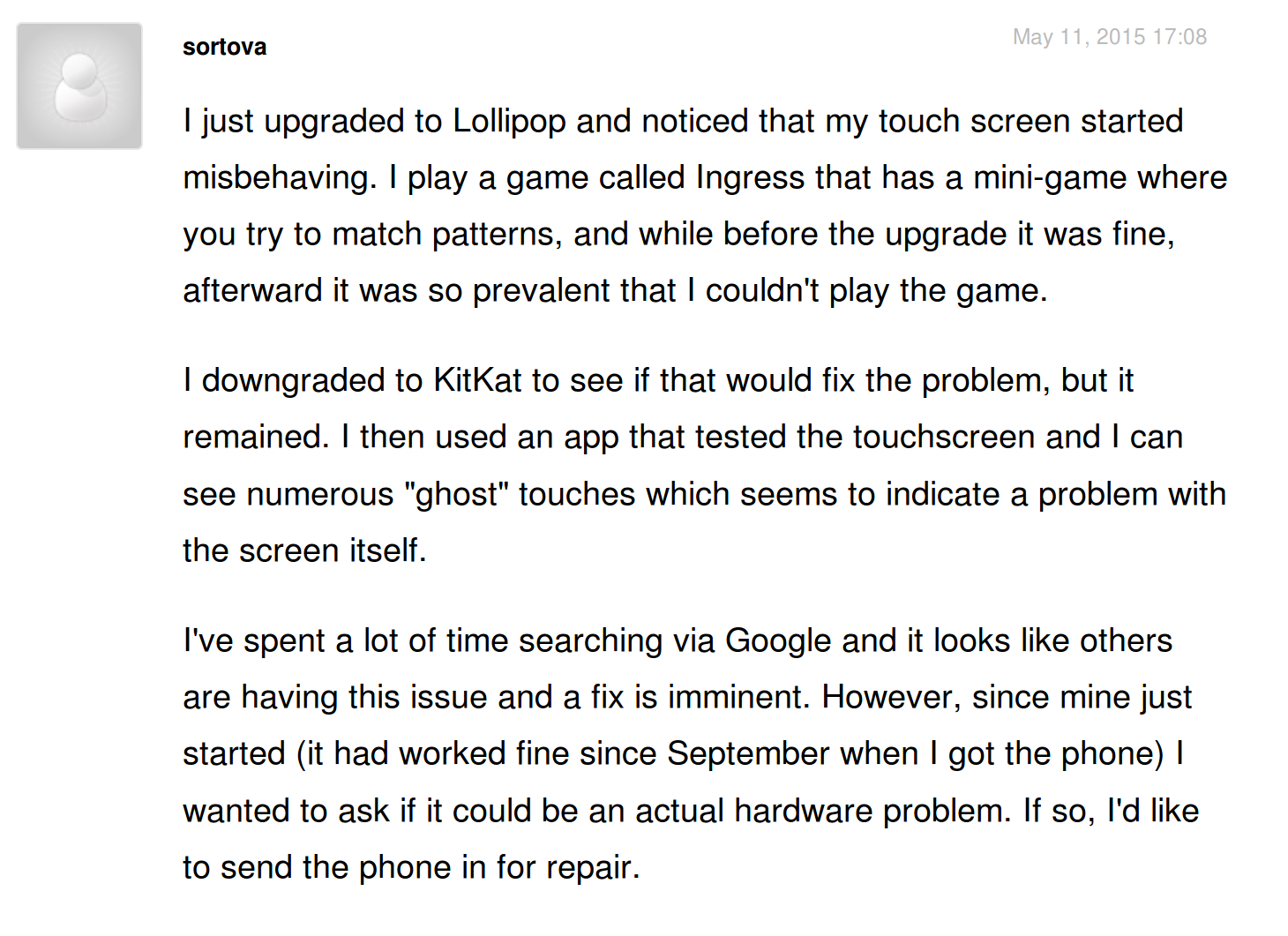
The next day (well, about 13 hours later) I got a reply. Not bad, actually, and I developed some false hope that this would work out.
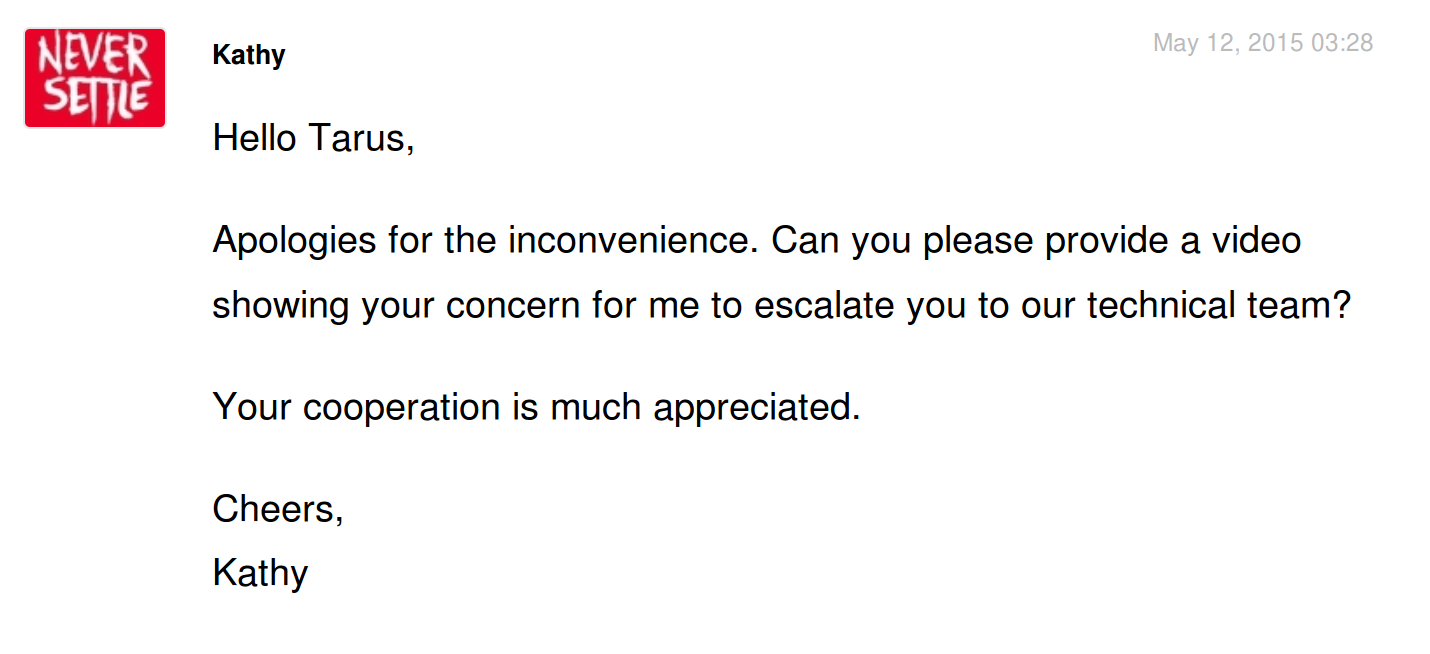
So “Kathy” wants me to send in a video. Okay, no worries. I made the video and sent them the link. This seemed to satisfy Kathy who escalated my issue, but then “Leah” also asked for a video.
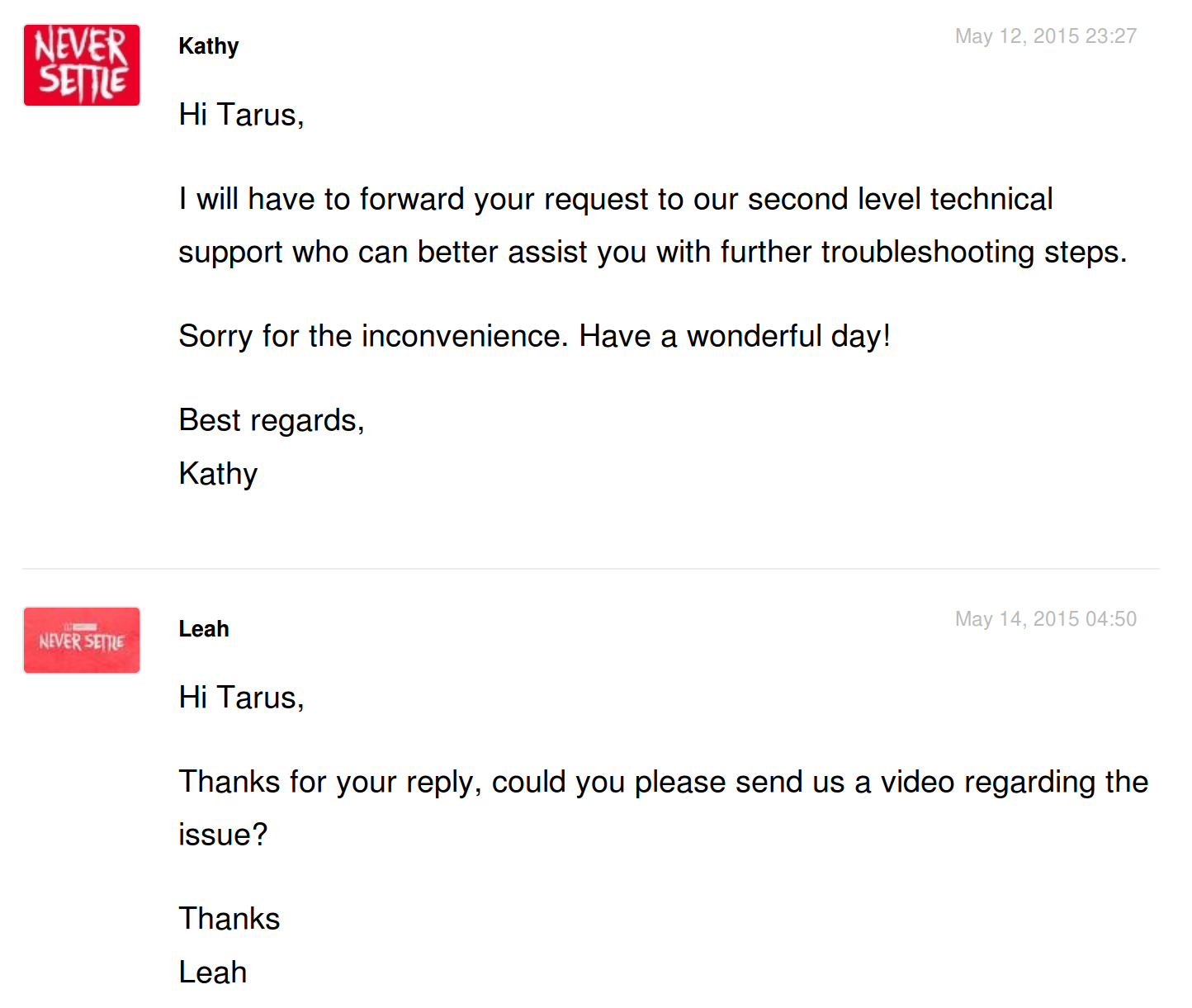
WTF? Okay, definitely a FAIL on reading comprehension, but I replied with a link to the original video and asked them what else they wanted to see. The next message, from Canoy Gem, asks for, you guessed it, another video:
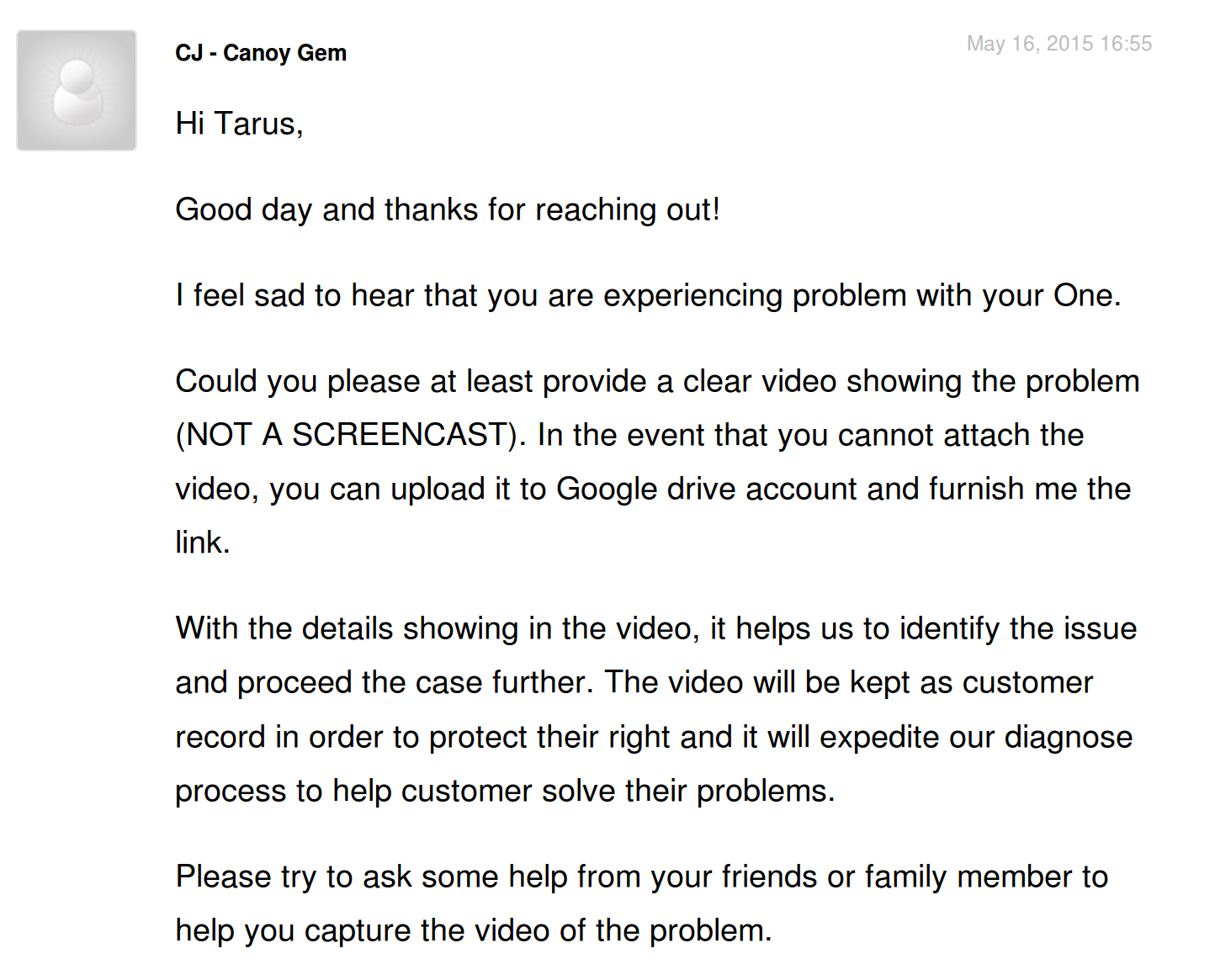
At this point it time it has become obvious to me that they are just stalling. There are a number of threads about this issue on their forums (here is the first one and now there is a second – both with pages and pages of comments). So I write back to Gem, again with a link to the video, and he replied with even more requests, this time for pictures:
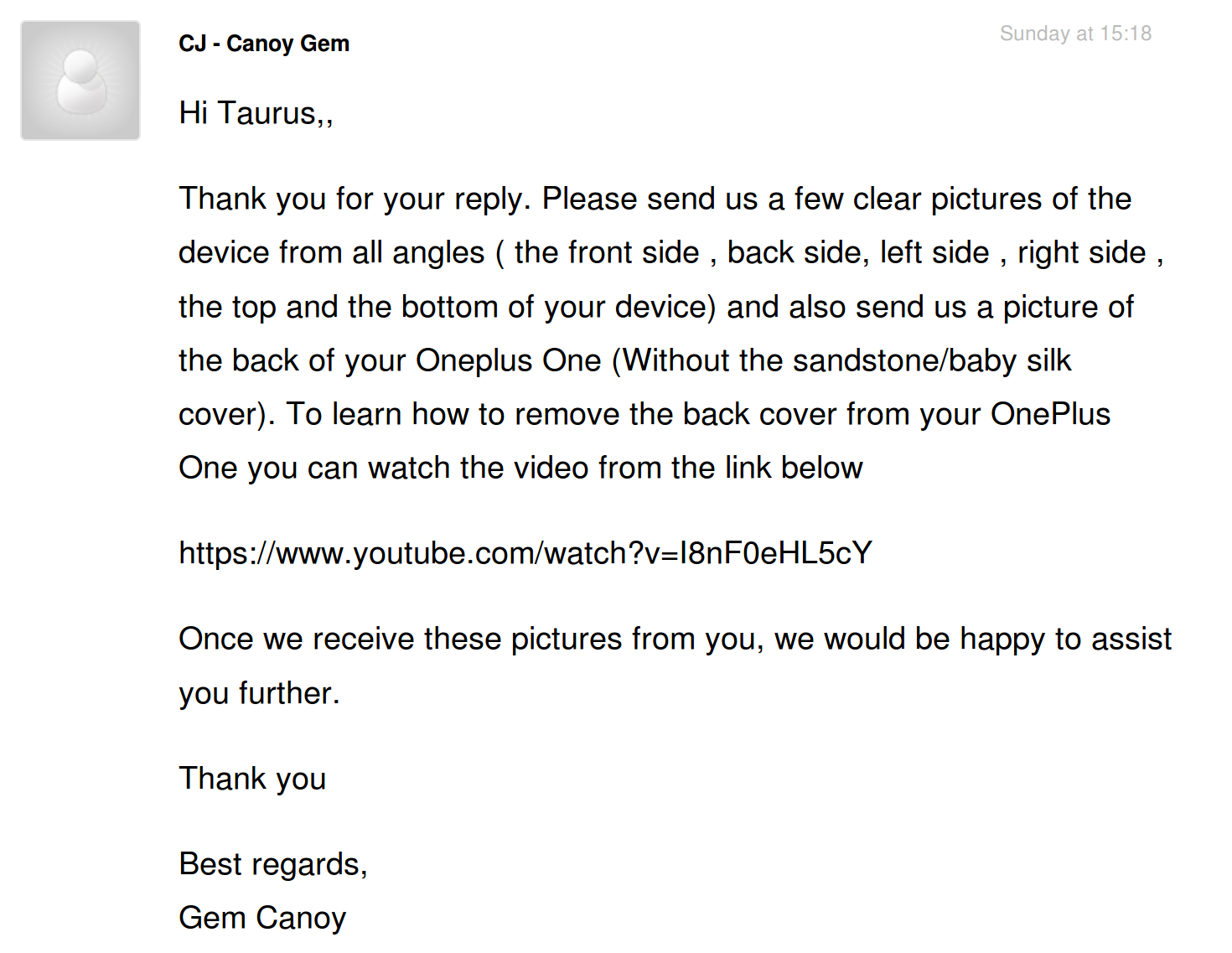
As I’ve seen with the replies from others on their forums, this seems to be pretty common – asking for videos and pictures. I waited until I had some decent light and took really nice pictures of my undamaged phone. However, I was unable to get the back cover off for the final picture. I’ve disassembled a number of devices over the years and while I could probably get this cover off it wouldn’t be without damage. If I damaged it, OnePlus would use it to deny warranty coverage. However, it looks like they are not going to proceed until I do.
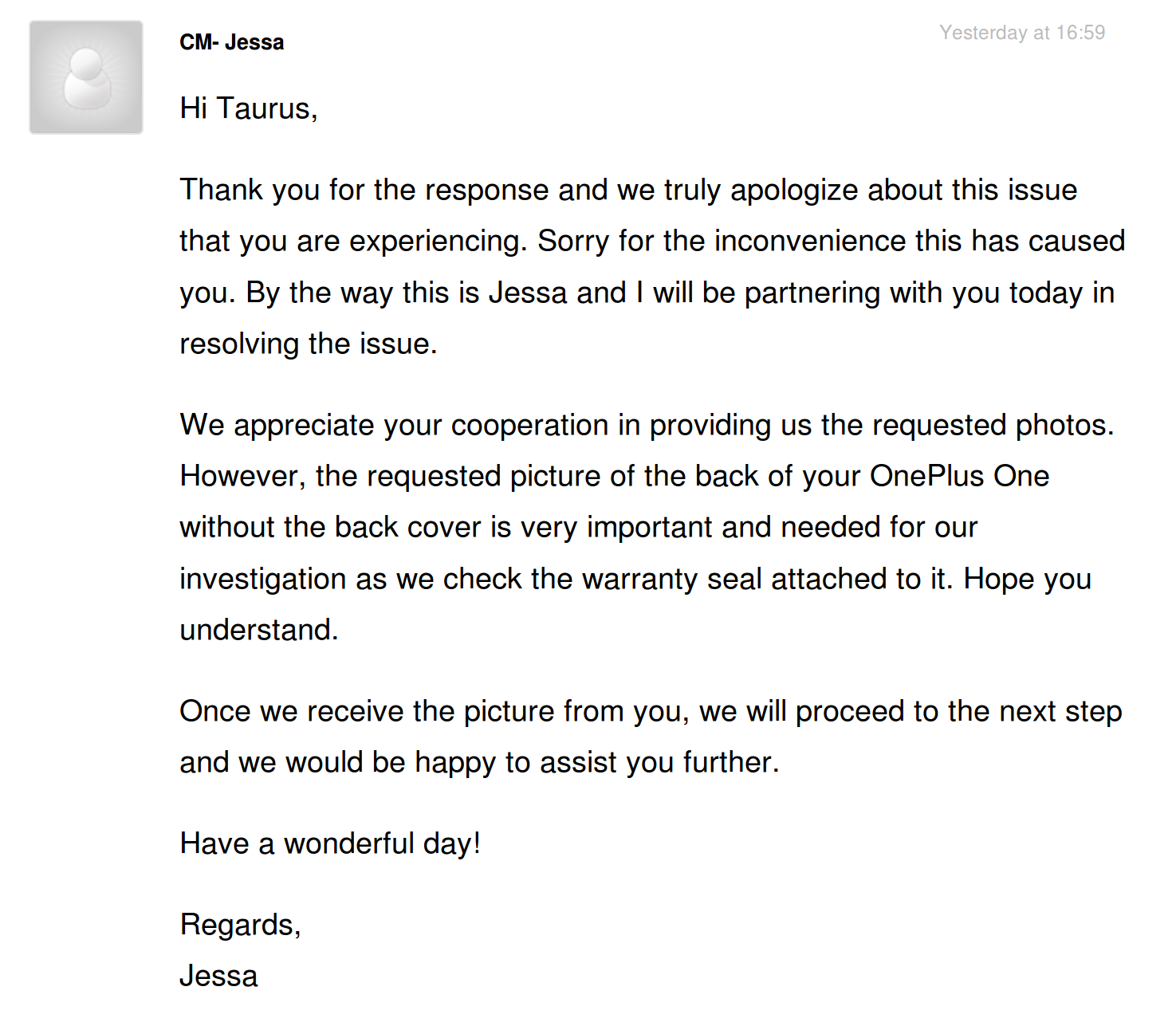
Note that in this entire exchange they have never mentioned that it might be corrected with a firmware fix (as talked about in the forums). I doubt this is the case with my phone as a) it just started happening and b) it seems restricted to the upper half of the screen, but I would have been willing to test it for them if they’d bring it up.
Also, I’ve noticed that most of the people responding to me have female names. This is a tactic in customer support as women are often treated better in such situations. While they may exist I’m pretty sure OnePlus technical support consists of one overworked guy named Zhang Wei.
I replied that my patience was at an end and either they would let me send them the phone that they could then examine to their heart’s content or I would pursue other actions. All I’ve done for now is replace it with a Nexus 6, but it seems to me that this is a prime example of a use case for a class action lawsuit: A large class of consumers has been apparently defrauded by a vendor supplying faulty products.
I’m talking to friends of mine with some experience in this, but if you have any suggestions for a firm to handle a class action lawsuit, please let me know.